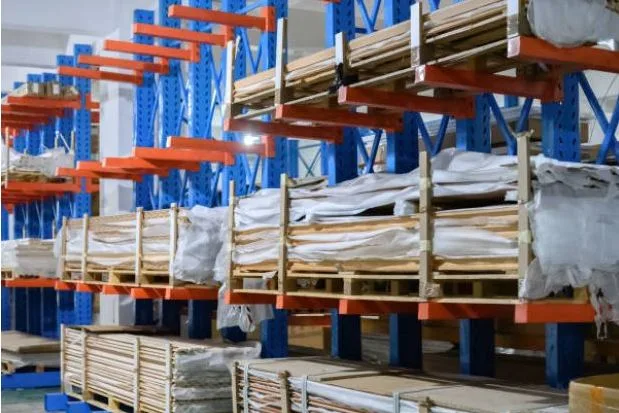5 Ways to Improve the Efficiency of Your Warehouse
Warehouse efficiency is the backbone of any successful logistics or distribution operation. Whether you manage a large metro-based warehouse or oversee a smaller regional storage facility, the need to optimise warehousing workflows is constant. Among the many strategies to enhance productivity, storage solutions such as cantilever racking are gaining popularity for their versatility and impact. This article will explore several methods, ranging from infrastructure upgrades to digital transformation, that can help you improve the efficiency of your warehouse.
Optimise Storage with Cantilever Racking
The first step towards a more efficient warehouse is evaluating your current storage systems and determining if it might be time for an upgrade. Cantilever racking in particular offers significant advantages for facilities handling long, bulky or irregularly shaped items such as timber, pipes or furniture. Unlike traditional pallet racking, cantilever systems provide unobstructed access and easy adjustability, allowing staff to retrieve and store items with minimal handling time. Implementing cantilever racking not only maximises vertical space, but also streamlines picking processes. By tailoring your racking configuration to the specific inventory you manage, you can reduce bottlenecks, minimise product damage and create a safer environment for your team.
Embrace Warehouse Management Systems (WMS)
A Warehouse Management System (WMS) enables real-time inventory tracking, automated stock rotation and optimised order picking routes. Integrating a cantilever racking setup with a WMS allows for precise location management, reducing the time spent searching for items and decreasing the risk of errors. Many WMS platforms also offer analytics and reporting features, giving you insights into slow-moving stock and overall workflow performance. Leveraging this data allows you to make informed decisions about stock placement and resource allocation.
Implement Lean Inventory Practices
Excess inventory can clog up valuable floor space and tie up capital. Adopting lean inventory principles such as just-in-time (JIT) stocking and regular cycle counts ensures your warehouse remains agile and responsive to changing demand. Cantilever racking complements lean practices by making it easy to reconfigure storage as inventory profiles shift. Conduct regular audits to identify obsolete or surplus items, and consider implementing a dynamic slotting system that adapts to sales patterns. These strategies collectively minimise waste and promote a more streamlined operation.
Prioritise Staff Training & Safety
A well-trained team is essential for a high-performing warehouse. Invest in ongoing training programs covering equipment operation, safe manual handling and emergency procedures. Encouraging a culture of safety not only reduces the risk of accidents, but also enhances overall morale and productivity. Regular safety audits and open communication channels can help maintain safety through staff changes over the years.
Continuous Improvement & Adaptability
Warehouse efficiency is not a set-and-forget proposition. Regularly review your processes, solicit feedback from staff and remain open to adopting new technologies or layout changes. The modular nature of cantilever racking systems makes them particularly well-suited to evolving business needs, as they can be expanded or reconfigured with minimal disruption.
Conclusion
By combining smart storage solutions like cantilever racking with technological integration, lean inventory management and a commitment to staff development, you can unlock new levels of efficiency in your warehouse. The result is a more responsive, cost-effective and safer operation, ready to meet the demands of a dynamic market and supply chain.






